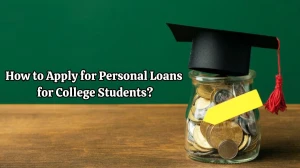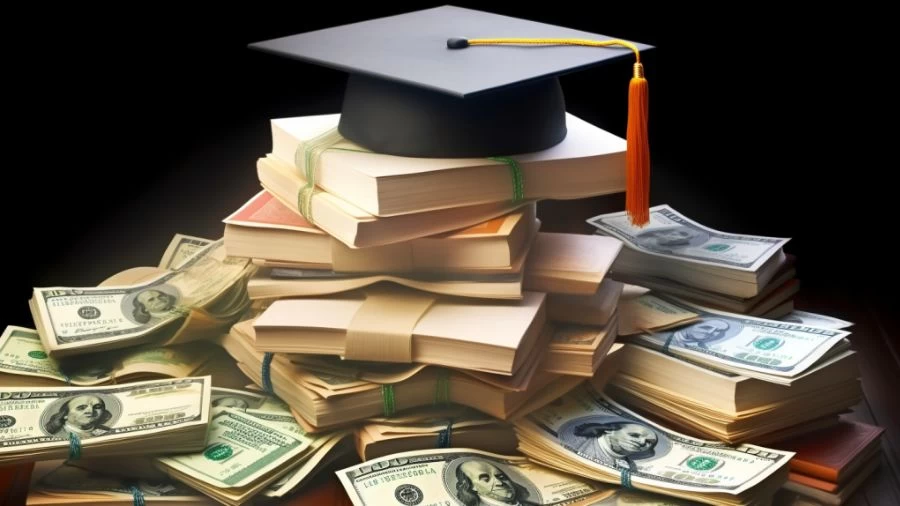
Student Loan Payments, When Do Student Loan Payments Start?
Student loan payments, on pause during the pandemic, resumed in October 2023 with accruing interest, prompting borrowers to prepare for reinstated payments, explore repayment plans, and stay informed about potential relief options.
by Sai V
Updated Nov 27, 2023
On This Page
Student Loan Payments
Student loan payments refer to the regular monetary contributions that individuals who have borrowed funds for their education are required to make towards the repayment of their federal student loans. These payments typically include both principal and interest and were temporarily paused under an administrative forbearance period initiated in March 2020 due to the COVID-19 pandemic.
As of October 2023, these payments have resumed, with interest accruing from September 1. Borrowers are advised to prepare for the reinstated payments, explore available repayment plans, update their information, and stay informed about potential relief options amid ongoing legal and political considerations.
The resumption follows multiple extensions of the forbearance period, and borrowers may encounter challenges in budgeting for these payments, especially in the context of inflation and economic uncertainties.
When Do Student Loan Payments Start?
Federal student loan payments, which had been paused since March 2020, resumed in October 2023, concluding an extended forbearance period. Despite no payments, interest, or collections during this time, interest began accruing from September 1, 2023.
To facilitate the transition, a 12-month "on-ramp" until September 30, 2024, allows missed payments without default but incurs interest. The Supreme Court's rejection of President Biden's loan forgiveness plan on June 30, 2023, underscores the need for the nearly 37 million borrowers to restart monthly payments, prompting exploration of alternative relief options amid ongoing legal uncertainties.
What Are Five Tips to Consider When Preparing to Repay Your Student Loans?
Student loans pose a financial challenge as repayment approaches. To navigate this, consider assessing loan details, confirming servicers, initiating financial planning, exploring affordability alternatives, and investigating additional financial aid sources. In this guide, we outline five essential tips for a smooth transition into the student loan repayment phase.
Assess Your Loan Details
Begin by reviewing your student loan account statement to gain a comprehensive understanding of your financial obligations. Take note of critical information such as your current balance, interest rate, and the impending monthly payment amount set to resume after any forbearance period. It's equally crucial to ensure that your loan servicer possesses accurate contact information to receive timely notifications.
Confirm Your Loan Servicer
Verify the entity currently handling your student loan, as shifts in loan servicers may occur. Loan servicers like FedLoan, Granite State, and Navient may have terminated contracts with the Department of Education, resulting in loan transfers. Identify your loan servicer through your Federal Student Aid account or by contacting the Federal Student Aid Information Center (FSAIC) at 1-800-433-3243.
Initiate Financial Planning for Repayments
Take proactive steps to prepare for upcoming student loan payments by initiating a savings plan. Regardless of potential student loan forgiveness decisions, consider cutting down on non-essential expenses or exploring additional income sources. This foresighted financial planning aims to mitigate the impact of repayment obligations.
Explore Alternatives for Affordability
Investigate alternative repayment options if you anticipate challenges in meeting your student loan payments. Explore income-driven repayment (IDR) plans designed to align monthly payments with your income. Additionally, consider loan deferment or forbearance plans based on eligibility, recognizing that some plans may accrue interest during the deferral period.
Investigate Additional Financial Aid Sources
Broaden your search for student aid beyond federal programs by exploring debt relief options sponsored by your state or local government. States like California may offer various student loan relief programs, including those tailored for specific professions. For instance, health professionals committing to multi-year service in medically underserved areas may qualify for substantial repayment assistance of up to $50,000. Research and leverage such regional opportunities to complement your repayment strategy.
Discover a world of financial expertise and valuable insights at MarketsHost. We're here to empower you in making well-informed decisions, whether you're considering Loans or other financial matters.
When is the Required Start Date for Payments?
The commencement of required payments for federal student loans is contingent upon specific milestones in your educational journey. Upon graduating, dropping below half-time enrollment, or leaving school, your federal student loan enters the repayment phase. Notably, a six-month grace period is granted for Direct Subsidized, Direct Unsubsidized, or Federal Family Education Loans, allowing borrowers time before regular payments are mandated.
Perkins Loan recipients, on the other hand, benefit from a nine-month grace period. It is crucial to recognize that PLUS loan repayment begins promptly once the loan is fully disbursed, though graduate and professional student PLUS borrowers experience automatic deferment during their academic tenure and an additional six months post-graduation, school departure, or a shift to less than half-time enrollment.
What is the Grace Period for Student Loans?
The grace period for federal student loans is a designated time frame, typically six months (or nine months for Perkins Loans), granted to borrowers after graduation, leaving school, or dropping below half-time enrollment.
During this period, individuals are not required to make loan payments, providing an opportunity to financially adjust and select a suitable repayment plan. It's important to note that interest continues to accrue during the grace period, but it does not capitalize immediately. Borrowers have the option to pay off the accrued interest before entering formal repayment, preventing it from increasing monthly payments or extending the repayment period.
What Are Some Alternative Methods for Repaying Student Loans?
Student Loans pose a financial challenge, but alternative strategies can help. Explore federal repayment plans, the SAVE initiative, and biweekly payments. Learn about forgiveness programs, state assistance, and employer benefits for a nuanced approach to student loan repayment.
Federal Student Loan Repayment Plans
One effective approach to managing student loan repayment is to explore various federal repayment plans. These plans include the standard 10-year plan, income-driven repayment, extended repayment, and graduated repayment. The choice of plan depends on individual financial circumstances and preferences. Tools like the Loan Simulator can assist in comparing monthly payments and long-term costs associated with each plan.
The SAVE Plan
Another alternative is the SAVE plan, a new initiative expected to offer a lower monthly payment based on discretionary income. Beginning in July 2024, it will further reduce undergraduate loan payments from 10% to 5% of discretionary income. This can be a beneficial option for those seeking a more affordable repayment structure.
Biweekly Payment Schedule
Opting for a biweekly payment schedule instead of the traditional monthly one can expedite debt repayment. By making payments every two weeks, individuals end up making one additional full payment per year. This strategy not only accelerates the repayment process but also leads to savings on overall interest costs.
Pursuing Student Loan Forgiveness Programs
For those in qualifying professions, exploring student loan forgiveness programs can be a strategic move. Programs like Public Service Loan Forgiveness (PSLF), Teacher Loan Forgiveness, and Nurse Corps Loan Forgiveness offer federal loan forgiveness after a specified number of years in service. This option can significantly reduce the burden of student debt over time.
State-Specific Loan Assistance Programs
Many states offer assistance programs tailored to professionals working in high-need or shortage communities. Checking the state government website for information on available programs is crucial. State-specific initiatives can provide additional relief and support for loan repayment.
Employer-Provided Student Loan Benefits
Employment with a company that offers student loan assistance as part of its benefits package is an increasingly sought-after option. Similar to 401(k) matching, this benefit can significantly contribute to debt repayment. Individuals are encouraged to inquire with their human resources department about the availability of such benefits or consider seeking employment with companies that prioritize this perk.
Student Loan Payments - FAQs
1. When did student loan payments resume after the COVID-19 forbearance?
Payments resumed in October 2023, following the March 2020 forbearance.
2. How long is the "on-ramp" period for missed payments without default?
The 12-month "on-ramp" lasts until September 30, 2024.
3. What's the grace period for federal student loans after graduation?
The grace period is typically six months (nine for Perkins Loans).
4. When does interest accrue during the grace period?
Interest accrues but doesn't capitalize immediately during the grace period.
5. What initiative aims to reduce undergraduate loan payments based on income?
The SAVE plan, starting July 2024, cuts payments from 10% to 5% of discretionary income.




